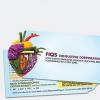Hello All.
I am currently working as PCQI / FSMA compliance in a large sized coffee roasting facility.
I am curious as to what risks and controls you have defined in your coffee roasting facilty. (HAACP)
With the data we have accumalated overtime, and the articles I have come across,
I'm having a hard time justifying the risk is high enough to define controls in our plan.
Currently we do moisture analysis on arrival to port, and roasting facility. (Mycotoxins)
Magnets throughout the process which are checked for strength with a Pull Test Kit. (Foreign Material)
Shaker Cleaning System that screens out raw coffee, separating debris. (Foreign Material)
The (kill step) of roasting coffee. (Mycotoxin/Microbial Reduction)
Pressure Checks of sealed bags of coffee. To ensure a tight seal. (Foreign Material/Pathogens)
Thanks for your time.
-Evan















